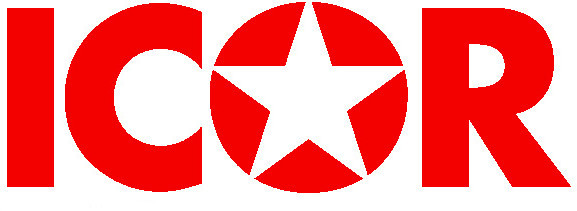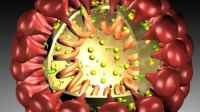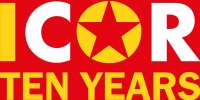The legislative elections in Morocco on September 8, 2021
On September 8, 2021, Morocco organized its legislative, regional and municipal elections, and here are the main remarks observed on the legislative elections. According to the Interior Ministry, 50.18% of Morocco's 18 million voters voted on September 8, 2021 to choose 395 deputies from among members of the 31 competing political parties. The following table shows the distribution of seats in the lower house among the winning parties:
|
Political parties |
Number of Chairs in Parliament |
Observations |
|
The National Rally of Independents (RNI) 1977 |
102 |
Candlestick Party created in 1977, chaired by the Billionaire Aziz Akhnouch friend of the King (He will be the future Head of Government |
|
Party of Authenticity and Modernity (PAM) 2010 |
87 |
Bourgeois Party created by the king's close friend in 2010 |
|
Independence Party (PI) 1944 |
81 |
Party of the elites of the Kingdoms (the big bosses of the Banks and Holding as well as the big owners of agricultural land) created in 1944 |
|
Union of Socialists of Popular Forces (USFP) 1975 |
34 |
Revisionist Socialist Party changed its name in 1975 to supposedly work from within the regime to democratize it, but it was the party that changed |
|
Popular Movement Party 1960 |
28 |
A party of large Amazigh landowners created in 1960, it has always been a member of consecutive governments since the 1960s |
|
Party of Progress and Socialism (PPS) 1973 |
22 |
Revisionist Socialist Party has been part of consecutive governments since its name was changed in 1973 |
|
Constitutional Party (PC) 1983 |
18 |
Party of a fraction of the Moroccan bourgeoisie created by a prime minister in 1983 |
|
Justice and Development Party (PJD) 1997 |
13 |
Party of Political Islam which has ruled since 2011, won 125 seats in the 2016 election, but fell to just 13 seats in the current election |
|
Various Parties |
10 |
Between 1, 1, 3 and 5 seats for 4 parties |
Remarks:
1 - A vertiginous fall of the Islamic party (PJD), which ruled Morocco since 2011 and which had an overwhelming majority in the 2016 elections (125 seats), and which it obtained only 13 seats in the current elections, he cannot even form a parliamentary team to organize the opposition. the defeat of this Party was expected, but defeat in this humiliating and resounding manner was not expected.
2 - It is the expression of the Monarch's will to crush this party, after having used him since 2011 to overcome the crisis of the "Arab Spring" and absorb the anger of the masses against the regime, as well as to enforce all anti-popular decisions to resolve the crisis of the fall in the rate of profit (from 2008 to 2014) at the expense of employees, peasants and retirees.
3 - The PJD has lost much of its electoral base due to its leadership in the zealous implementation of extremist, brutal and unpopular liberal policies, and also due to the signing by its Secretary General, Prime Minister, of the treacherous normalization agreement with the enemy of the Massa Zionists and its support by the party. That the latter was based on opportunism and careerism and not on struggle, which explains the ease of its collapse.
4 - This change marks a radical change in the political behaviour of the regime, it is no longer afraid of the masses as in 2011, and it took the decision to return the management of bio politics to the traditional Moroccan bourgeois, after having made the masses the traditional extreme exploitation of the bourgeoisie during the last decade.
5 - Rising forces, competing with each other to win the bet to implement the monarch's program, prepared in advance represented in the so-called new development model as a continuation of austerity and structural adjustment policies.
6 - The regime ousted the Islamists from the government, after having tainted them, to first of all rule out their competition for the religious status of the king as "prince of believers", as well as to temper the diplomatic relations of the Monarch with the imperialist powers West and Israel, knowing that there are currently violent tensions between Morocco and Algeria which tends to develop towards an open war between the two countries.
7 - The regime also needs to maintain more "facade democracy" by marketing the game of "bourgeois democracy", to hide the real fascist face of the autocratic regime where all decisions are not taken by elected officials, but by the king's advisers and by the king himself who presides over the councils of ministers and by the minister of the interior and the mayors and prefects who are appointed exclusively by the king. So the regime still maintains its medieval method of governance.
8 - The parties that participated in the Boycott of these elections are first of all a coalition between two political parties, one of them is a revisionist party (the democratic way) and the other is a radical fascist Islamist party (Justice and Charity), a bizarre coalition between these two parties that lasted more than twenty years. On the other hand there are the boycott companions of the Marxist Leninists, the Maoists, the Trotskyists, as well as the autonomous unions, especially that of unemployed teachers and graduates and of the national union of students and of the bassist democratic path (tendency Marxist-Leninist within universities) as well as the coalition of families of political detainees, especially the families of detainees in the Harak du Rif. Despite the extreme police repression, the Boycott campaign serves to dialogue with the masses on the present and future economic and social policies of the regime, and on the absurdity of the empty democratic elections in Morocco.
9 - These elections saw an unprecedented use of money and forms of forgery through corrupt regulations and electronic processing of results, manipulation of records and refusal to hand them over. They have also experienced a significant increase in the level of violence and intimidation.
10 - A simple calculation shows that we have falsified the participation rate. Knowing that at noon on September 8, 2021, the number of voters was 12%; At five o'clock in the evening, the turnout reached 36 percent. And when the polls closed at seven in the evening, the percentage jumped to 50.18 percent, with a difference of 14.18 percent in two hours, which equates to 2.5 million voters in two o'clock. Which means 106,000 voters every 5 minutes. 2,127 voters inside each of the polling stations across the country every 5 minutes, and this has not been shown by all TV stations, which generally look for opportunities to monitor rallies and thus justify the herd of people at the polling stations.
11 - The combination of municipal and parliamentary elections in one day contributed to the relative increase in the turnout. However, the advertised percentage is inflated and has no realistic basis. In any case, even if we accept them, and by calculating the cancelled votes that the Ministry of the Interior has once again ignored, which we estimate at least one and a half million as in 2011, the participation rate real calculated on the electoral base which exceeds 25 million does not exceed 30%. Thus, the system has again lost the stake of participation. Consequently, we consider that the results of these elections and the institutions which emanate from them neither reflect nor express the will of the masses.
The MMLPL
Document Actions




